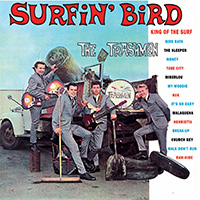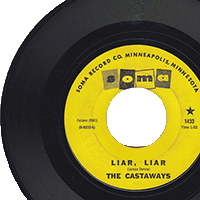Texas Bill Strength: Death and Legacy
One topic that I knew almost nothing about was the circumstances surrounding the automobile accident that led to the untimely death of Texas Bill. It’s no wonder – the information was all over the place:
- In an article about TBS published in the Journal of Country Music in 1998, Ronnie Pugh wrote, “While riding back asleep from a singing job in Fargo, North Dakota, on August 5, 1973, Strength was paralyzed from the chest down when his car, driven by a friend, left the road and flipped over several times.”
- In the program from the 2006 Rock/Country Hall of Fame when TBS was inducted, his biography says that he was “asleep in a car while driving with a friend on a promotional tour.” This is the same language used in TBS’s biography on a website called hillbilly-music.com and another one called bopping.
- A website connected with a country broadcaster’s radio seminar also mentioned the “promotional tour.”
None of this turned out to be true. The “friend” turned out to be his steel guitar player, Bobby Mack (McDonald), and many years later, Bobby Mack’s ex-wife, Kim Martin, wrote a song based on a newspaper article from the town where the accident happened. The song was called “Denver Dragon” (a nickname TBS picked up because he could do the routine so well), and can be heard on YouTube. The song yielded more hints and inspired me to go to North Dakota to check it out for myself. I spoke to witnesses, read contemporary newspaper accounts, took photos, and I think finally got the real story of what happened on the tragic night that caused the injuries that ultimately led to the death of Texas Bill.
Some of the information below is undoubtedly heresay, some speculation, and some from members of the Strength family. Much comes from memories from 45 years later. But I have a fair amount of confidence in the sequence of events.
THE GIG
Far from being a “promotional tour,” this was just a one-off performance where the plan was to drive up to the venue from the Twin Cities, do the show, and return after the show was over. Kim said Bill set it up for Sunday, August 5, 1973. She said she was supposed to sing and play bass, but she was called into court and had to stay in Minneapolis. Bill recruited Bobby Mack to be a part of the band.
Also on the bill were “Lema” and Les Fairbanks. (Upper Midwest Country & Western News – Scene, September 1973)
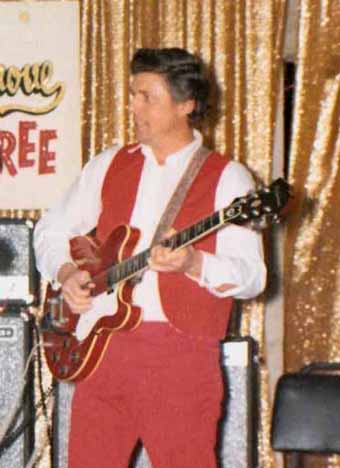
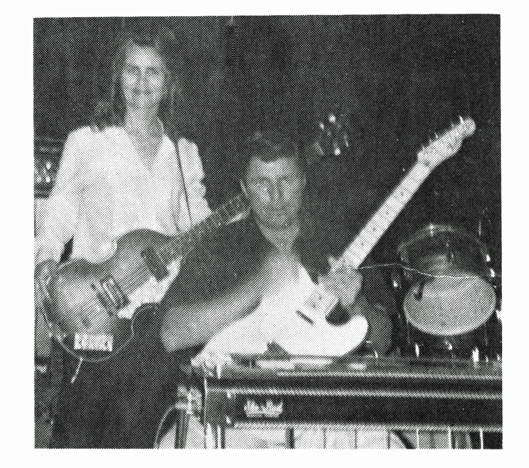
THE VENUE
The name of the venue was the Riverside Supper Club, located ten miles south of Oakes, North Dakota, and a mile west of tiny Ludden (Population 44 in 1970). Sherwin Linton had “discovered” the place; he says,
I had played there many times from May of 1970 through the ’70s and early ’80s. I would likely have never been there if I had not blew an engine on a new Dodge Motorhome, but that’s another story. I introduced Marvin Rainwater and Bill to the owner Don Pulfrey and arranged for them to be booked there.
Even now the club appears to be in the middle of nowhere, but it is conveniently located at the intersection of Highways 11 and 1, on the east bank of the James (called the “Jim”) River. Sherwin says that folks in the surrounding small towns thought nothing of driving for miles to the place for dinner and a show.

The Riverside was a 50’ x 100’ brick building built in 1961 by Marvin and Geneva Anderson, and Geneva’s brother-in-law, Elmer Jensen. After a soft opening, there was a Grand Opening on December 18, 1961, with a rose given to the first 100 ladies and an undisclosed grand prize. In 1968 the club was sold to Don Pulfrey. Pulfrey owned it when the accident happened.
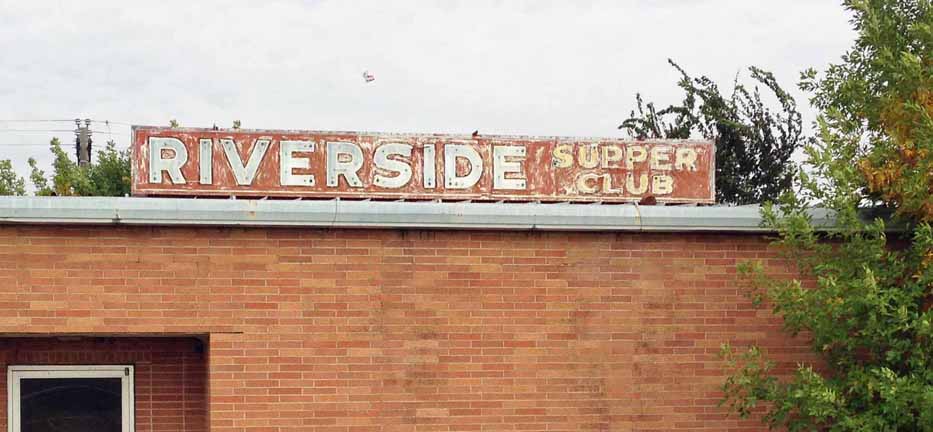
The next owner was Marvin Anderson, Jr., who bought it in December 1974 but closed it in November 1975 to move to California. The next owner was Kenneth “Snook” Loepp and his wife Donna, who made all the salads. The Loepps bought it in 1980, but shortly after Donna died in 2001, Kenneth closed the Riverside. Snook died in December 2015. The Riverside today is a ruin, with a caved-in roof and overgrown shrubbery. But a peek in the door reveals the dining room to the left, still set for dinner with tables and chairs and tablecloths. The kitchen is straight ahead, and the lounge is to the right.
A wooden extension was built to accommodate the band and the dance floor. A mural featuring pink mountains was painted on the end of the extension (on the right in the photo below).
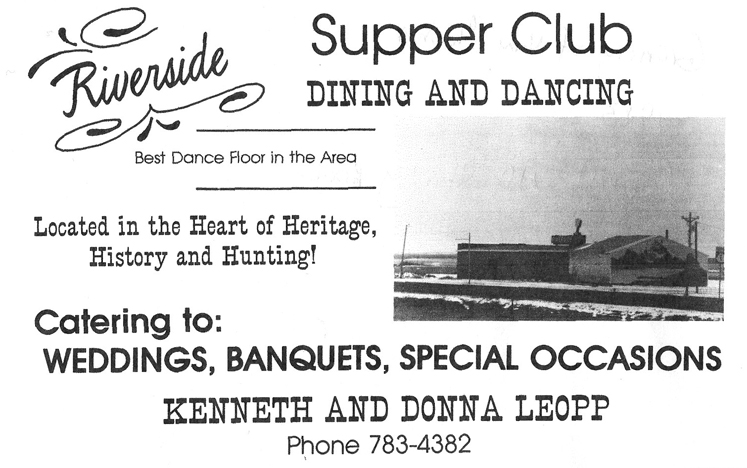
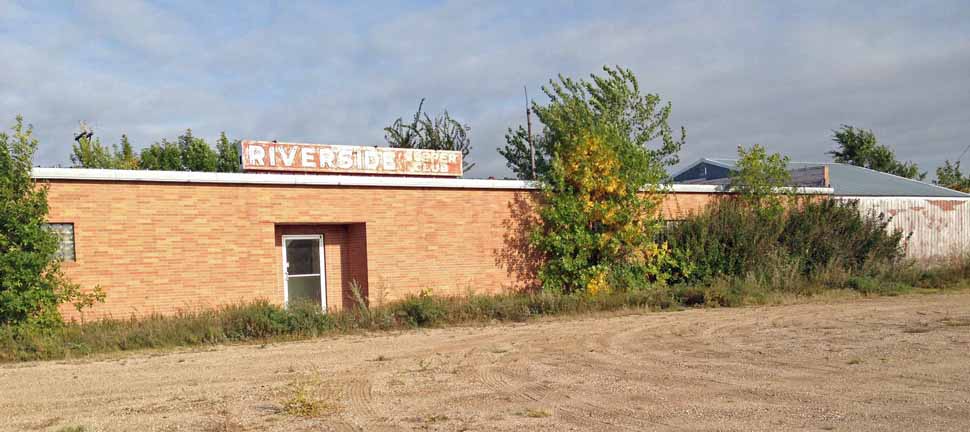
LEAVING THE CLUB
After the show, the musicians hung around, drinking and having fun. Based on when Bobby Mack arrived at his door for help, farmer Lorence Holmgren estimated that they probably left the club about 4:30 am.
Sherwin Linton:
I talked with Don (Pulfrey) later after the accident and he said Bill and Bob (especially Bill) stayed and partied after the show and were well loaded when they left. He begged them not to leave, even offered to put them up in his 1970 Dodge Motorhome out back, but they left anyway. When Don talked about that night he had tears in his eyes.
WHO WAS DRIVING
This seems to be one of the biggest sources of contention, but it seems pretty clear that Bill was driving. First, both men were most certainly in the front seat, since the back seat was full of musical instruments, including a steel guitar.
- Kim Martin seems to think that her husband “Bob was asleep, which no doubt saved his life as he was relaxed.”
- This contradicts what Lorence Holmgren remembers, which is that Bob told him that he was awake and kept telling Bill that he was going the wrong way.
- As was mentioned in the introduction, some mysterious “friend” was driving while Bill was sleeping in the back seat.
- The Kulm Messenger, 8/16/73: “Driver Texas Bill Strength…”
THE CRASH
Lorence described the mixup: From Ludden they would have gone north on Highway 1 and turned right (east) to get on Highway 13. 13 would have taken them all the way to 94 and back to the ‘Cities. Instead they missed the 13 that was going east, kept going north on Highway 1, and saw a sign for Highway 13, but that 13 was going west. When they reached Highway 281 (at Edgeley), Bob was sure they were going the wrong way, but the more he tried to tell Bill that they needed to turn around, the faster Bill drove.
Four Mile Corner: (Kulm Messenger, 8/9/1973): “Their car failed to complete the curve in Highway 13, 4 miles north of [Kulm]. Apparently the car traveled along the north shoulder for several hundred feet but rolled over as the driver attempted to bring the car back on the highway.” Four mile corner has been reconfigured since then, but that was the term used for it in the newspaper account. I suspect that Kim used this account for her song.
Lorence said the car slid sideways, halfway off the grass before it started to roll. The tires blew, the car rotated 2 ½ times and ended up on its roof.
The devastation of the damage can be seen in the photos below, taken by Dale Strength after the car was towed into town.
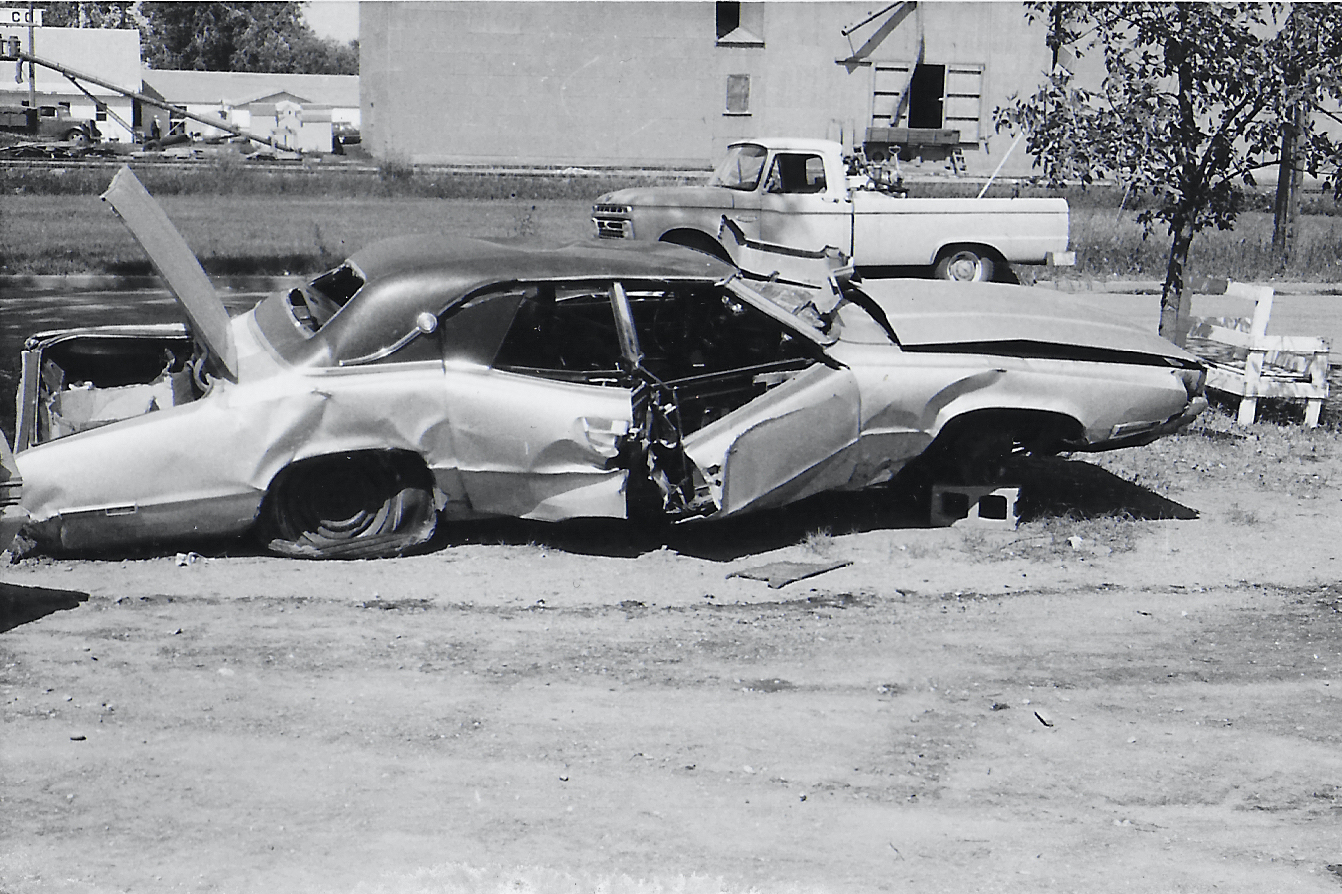
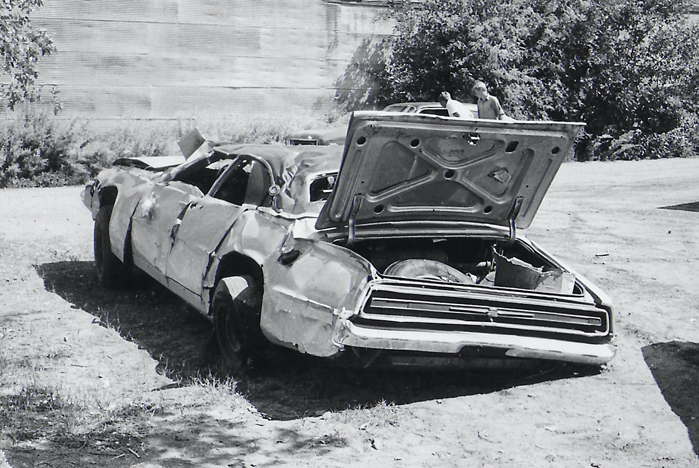
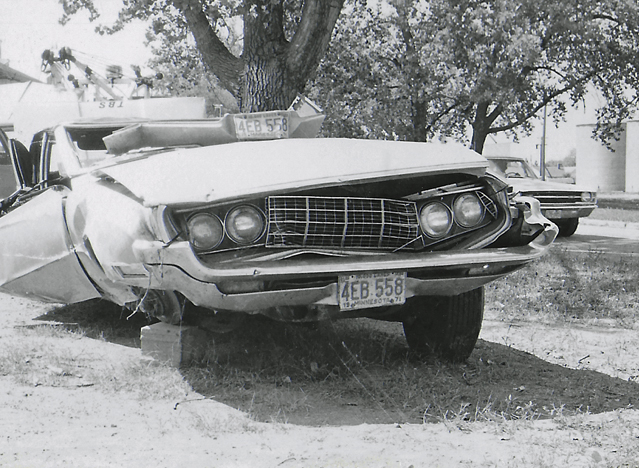
The photo below was published in the local newspaper.

Bill bought his 1968 silver Thunderbird from friend/fellow musician Chill Hilmin. This was one of the most powerful cars on the road, with a V-8 engine that had to be tuned down for insurance purposes.
THE WEATHER
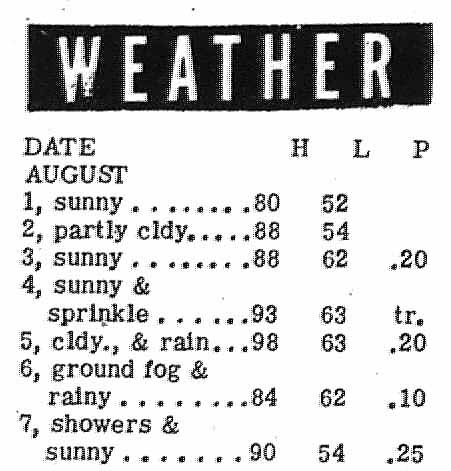
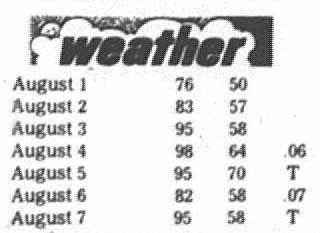
THE HOLMGRENS
Bob crawled (Kim) or walked (Kulm Messenger, 8/9 and 8/16) to the Holmgren farm where he saw a light and summoned help. A neighboring farm was actually closer, but Bob probably saw their light.
Lorence Holmgren was 22 at the time and was raised on the farm. He had just taken it over from his parents a couple of years ago from his parents, who had moved into town.
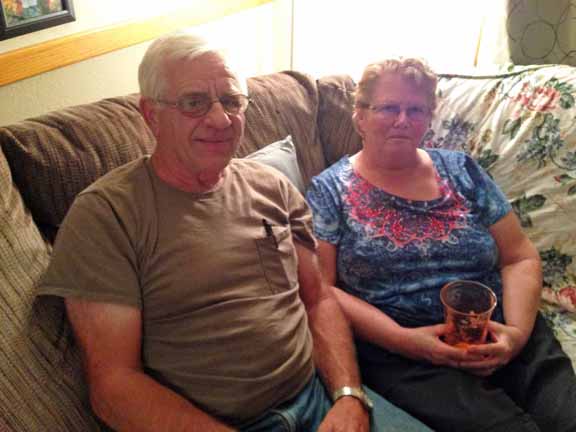
Lorence and his wife described the scene that night. Bob got to the house, opened the outside screen door, and pounded on the kitchen door. It was then about 6 am Sunday morning. Lorence went to see who it was. Bob was soaking wet and had some blood on him but wasn’t too gruesome. Lorence’s brother Michael was staying there that night too. They remember Bob’s first words as “You gotta help us.” He asked for blankets and laid down on the kitchen floor.
BOB’S INJURIES AND HOSPITALS
Lorence and his wife personally took Bob to the local hospital in Wishek. She said they had to air out the car afterwards, it smelled so much like alcohol. The Kulm Messenger said Bob was still in Wishek on August 9.
Kulm Messenger, 8/16/73: Bob was later transferred to St. Luke’s in Fargo with a partially crushed chest and an injured knee. “He will go back (to St. Luke’s) next week for a knee operation.”
Kim said he was then released to recover at home.
IMMEDIATELY FOLLOWING THE CRASH: BILL
Lorence realized from Bob’s description that Bill’s injuries were more serious and he needed an ambulance. With no 911 system, all he could think of to do was to call local policeman and friend Dave Robinson and Dave handled calling the ambulance for Bill. The Kulm Messenger (August 9, 1973) said that the Holmgrens “called ambulance and patrol.”
ELLENDALE
Edgeley Ambulance took Bill to Ellendale Memorial Hospital. According to admissions reports in the paper, he was not admitted.
Bill’s son Dale and friend Gregg immediately drove up to Ellendale. Dale remembers that Bill’s head was stabilized and he was upside down so they had to look at him from underneath. Dale remembers Bill saying something to the effect of, “Well boys, here we go again.” Gregg remembers looking up from the floor at him and laughing. Bill’s jaw was already wired shut.
ST. LUKE’S
Not right away, but soon he was transferred to St. Luke’s Hospital in Fargo. Below is a photo of St. Luke’s in 1975 – it looked just the same in 2018, although with extensive additions on the right side. In 2018 it was owned by the Sanford Medical Group, but apparently the locals still call it St. Luke’s. The quality of the photo is poor because it is from a display in the lobby taken with a phone.

KIM MARTIN’S SONG TO BILL
In the September 1973 issue of the Upper Midwest County & Western News – Scene, there was a song that was written by Kim Martin especially for Texas Bill on August 9, 1973, at 1:30 am. It went:
Roses, Weeds – and a Friend
Think about the roses,
How their beauty came to be.
With thought and consideration
They were planted carefully.
The ground was cultivated
And weeded day by day.
So anything to harm them,
Would not get in their way.
Nurtured with such patience,
They soon began to thrive,
Until the roses paid their debt –
The blossoms came alive.
The weeds grew all around them,
Their beginning had been strong.
The odds that tried to halt them,
Soon found out they were wrong.
The roses kept their beauty,
In spite of endless things.
Nothing could defeat them,
Or inable them to bring
A laugh to one unhappy,
A smile to someone sad,
Sympathy when needed,
Good works for some bad.
A comfort in time of sorrow,
Strength to someone weak.
A loan without a question,
Help to all who seek.
Throughout the roses’ lifetime,
The weeds will never end,
But the roses have their beauty,
And that is you, my friend.
At this writing, TBS was in poor condition at St. Luke’s Hospital in Fargo following an auto accident. Bill records for Brite Star in Nashville. (Nashville Scene column by Bill Williams, Billboard, August 18, 1973)
Bill Williams reported that TBS was still in the Fargo hospital. This appears to be his last mention in Billboard. (August 25, 1973)
ST. PAUL – RAMSEY HOSPITAL
Dale used his connections to have him transferred to St. Paul – this must have been before August 15.
BILL’S INJURIES
Kulm Messenger, August 9, 1973: Bill was pinned in the wreckage. The inside of the car was a mess of broken musical instruments, guitars, amplifiers, and other equipment.
Kulm Messenger, August 16, 1973: Still in serious condition (by then in St. Paul)
- broken jaw
- broken neck. Kim says this was due to the pedal steel that landed on him from the back seat and had to be lifted off of him. She said he was paralyzed from the waist down and would never walk again.
- broken left arm, reportedly broken in three places.
- He had to breathe through a tracheal tube.
He would also have had symptoms of alcohol withdrawal, but they would have lasted only the first 5-7 days, and he would have been heavily sedated anyway.
DETERMINATION
Despite his injuries, Bill wrote an article for the October 1973 issue of the Upper Midwest Country & Western News Scene magazine called “Down Memory Lane.” He referred to his “almost-fatal accident” and said that his doctors said that he’d never walk again. Nevertheless, he expressed his determination to follow through on his plans to lead a bus tour to Nashville, although at a postponed date. “Even if I can’t walk again, I think I can get me an electric wheelchair, with an outboard motor on it or something. I’ll get around. Right now I feel about as necessary as a milk pail under a bull …” Bill dedicated the article to his idol and friend, Ernest Tubb.
Friends rallied behind him; Kim Martin remembers:
I purchased a beautiful new Ovation guitar at Roger and Char Suneson’s Music Store on Lake Street in Minneapolis and brought it to the hospital to give him hope and something to live for. I thought if he saw it, he’d get the energy to focus on building strength. He was so happy to have it and I could clearly see that. I’m so glad I did as I saw the joy in his face. Even if he couldn’t play it yet he could think about doing it one day. When I put the guitar on his bed his eyes filled up with tears (poor soul).
Jan Sherman of the North Sisters was at the hospital when Al Tedesco, who owned the radio station, promised to build him a ramp, and Bill’s eyes welled up with tears.
COMA
At about 2 am on September 15, 1973, while Bill was asleep, his doctor ordered Bill’s tracheal tube turned off. This is commonly done to encourage the patient to breathe on his own. However, when you do this you also have to deflate the cuff that holds the tube in place, or the patient isn’t able to breathe. The lack of oxygen caused him to suffer respiratory arrest and go into a coma. (Presumably the mistake was caught or he would have died from lack of oxygen that night?) Although no one at the hospital officially admitted that this is what happened, a nurse or other staff member told Dale the next day either that the cuff had not been deflated or simply that a mistake had been made.
Hearing that Bill was in a coma, loyal friend Tex Ritter sent a reel to reel tape for Dale to play for him in the hospital. It was a loop of encouraging words, urging him to wake up and telling him how much he was loved by his friends.
BENEFIT
On September 30, 1973, friends of TBS sponsored a benefit at the Medina Ballroom from noon to midnight. In the notice of Bill’s passing in the November 1973 Insider, Peter Dwyer said of the event,
The famous and talented country star passed on the day after his friends packed the Medina Ballroom in Hamel for a testimonial. They came by the droves, more than 5,000 of them, and raised thousands of dollars for his hospital bills.
Son Dale, still in shock, remembered it differently, wondering why so little was raised at the event.
THE DEATH OF TEXAS BILL
Texas Bill Strength died at St. Paul-Ramsey Hospital on October 1, 1973.
His Certificate of Death reported a series of natural causes:
- Cardiac Arrest: “Immediate cause” listed on the Certificate of Death.
- Chronic cardio-pulmonary deterioration: This brings up COPD when Googled.
- Cervical fracture with quadriplegia: Broken neck, but we know he wasn’t quadriplegic as he could move his arms.
Other significant conditions: Chronic obstructive lung disease with pneumonia
Newspapers, presumably working with a press release, reported these causes:
- Injuries from the accident: Most newspapers said that Bill died as a result of the injuries he sustained in the car accident, despite the fact that he had survived them for two months.
- Pneumonia: Two papers reported that although he had suffered serious injuries in the accident, the hospital listed his cause of death as pneumonia. The Indiana Press and the San Antonio Express and News worded their reports almost the same way, as if working from a different press release.
LEGAL ACTION
Remember that the only one left in charge was Bill’s son Dale, who was a month from turning 24 years old. He had to make funeral arrangements, fend off Bill’s “friends” who were trying to help themselves to his belongings, and keep his own career going at the same time. To say this was a bit bewildering is an understatement.
Then appears a Mr. William C. Bland, a lawyer friend of Bill’s from somewhere down South, whose stated purpose was to bring a wrongful death case against the hospital. Bland was a big fellow, who was not in great shape himself; in fact, Dale remembers that he died very shortly after his visit to Minnesota. He stayed in Bill’s apartment while he prepared his case, and somehow was able to obtain access to Bill’s medical records quite easily.
And he won. Now, how much he won is long forgotten, by all three of Bill’s heirs. Those terrible days in the aftermath of his father’s death became a blur over time, but Dale remembers his father’s good friend, William C. Bland.
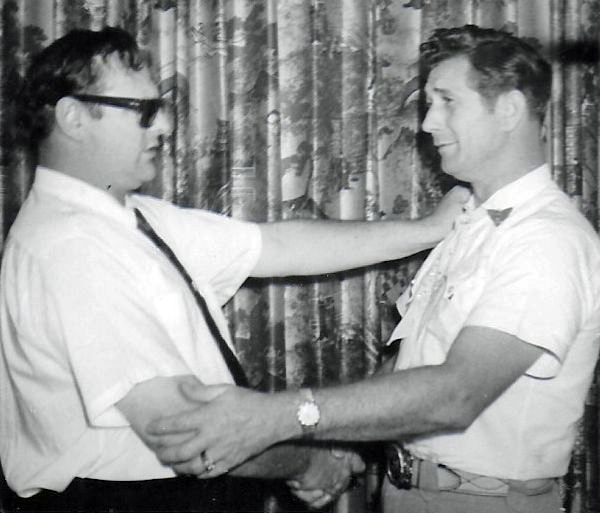
MY TAKE
Texas Bill got himself into a mess by drinking, driving, and maybe just being too ornery. But he was willing to own up to his mistake and live out the rest of his life, even if he could never sing again and if he had to get around in a wheelchair with an “outboard motor.”
What killed him was another mistake, a much more subtle but deadly mistake made by a nurse who accidentally asphyxiated him in a St. Paul hospital. This one was covered up, and although it couldn’t be undone, his family was denied the answers and compensation they deserved.
But however tragic the circumstances of his death, we are left with the songs, the stories, the adventures, the friendships, and the love for his family that make up the legacy of Texas Bill Strength.
SERVICES AND TRIBUTES
Services for Texas Bill were held at Fourth Baptist Church on October 6, 1973, at 11 am, with burial at Lakewood Cemetery in Minneapolis. Memorials were preferred to the Country Entertainers Association’s Trust Fund.
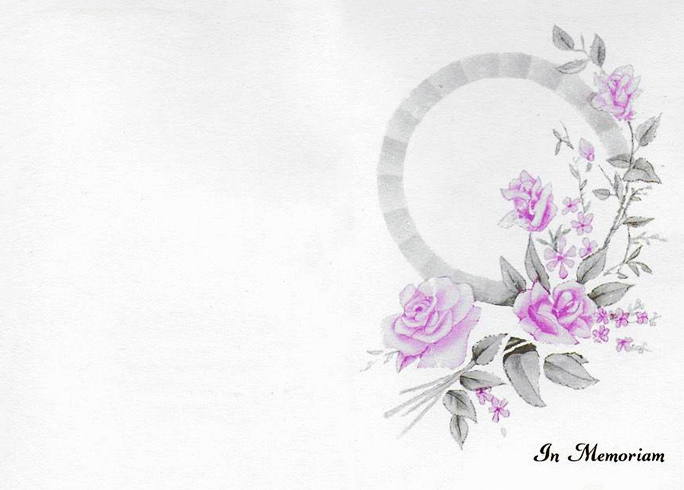
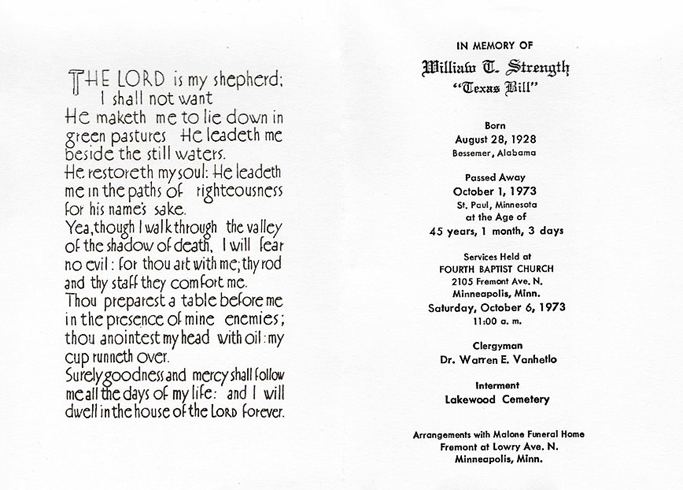
Funeral services were held last week for TBS, at Minneapolis. He died there of injuries suffered in an auto accident several weeks ago. (Billboard, October 20, 1973)
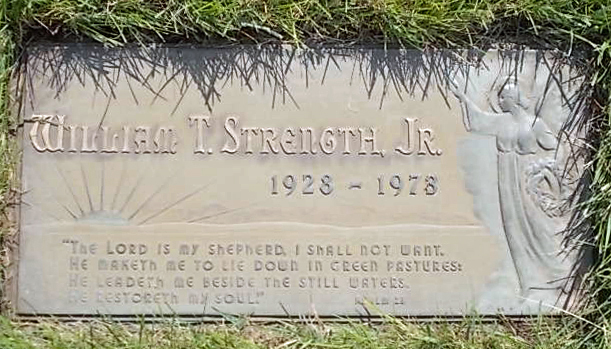
On October 6, 1973, KTCR honored TBS on its Country 9 + 20 Survey (look under “KTCR Pick-Album”).
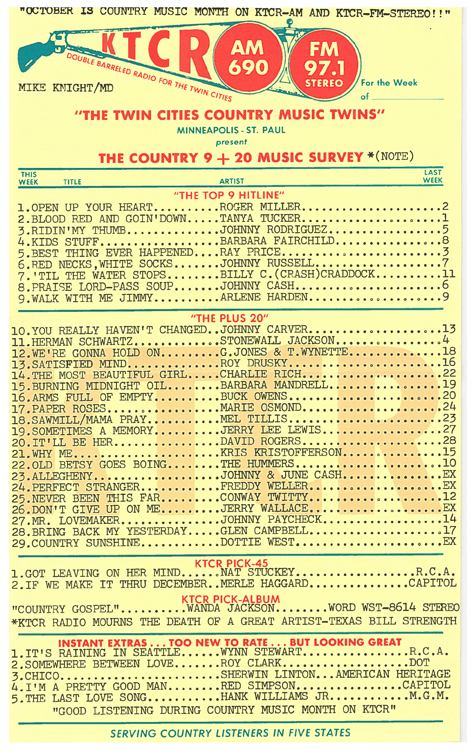
The November 1973 Insider’s announcement said,
Strength had one of the richest histories of any country star. He was a radio personality who’d appeared with friends like Hank Williams, Johnny Cash, Tex Ritter, and Marvin Rainwater. He’d recorded on the Memphis Sun label, Capitol, and Coral, as well as locally; and he’d appeared at the Grand Ole Opry. Though he never had that one monster smash song, he was a gifted and influential figure in country music. We’re saddened at the loss of this fine man.
COUNTRY ENTERTAINERS’ ASSOCIATION
The December 1973 Insider reported that the Country Entertainers’ Association of the Upper Midwest (CEA) was formed during the summer and fall in Minneapolis. The CEA was a pet project of TBS. Its many purposes were to:
- Promote the use of live entertainment;
- Provide an informational monthly publication;
- Provide social and promotional activities, including public exposure and stage experience for members and guests;
- Provide an annual directory of members; and
- Obtain discounts for members through music stores and other businesses engaged in supplying goods and services to country music entertainers.
A future goal was to set up a trust fund for regular members who become disabled and face severe financial difficulties. This would eliminate the benefit shows which had been the means to aid needy musicians.
Officers of the CEA were:
- Fredddie Haas, President
- Skip Spaulding, Vice President
- Linda Tretter, Secretary-Treasurer
1974
LETTERS FROM FRIENDS
In the wake of the passing of Tex Ritter on January 2, 1974, TBS’s son Dale wrote to his father’s friends in the Country music community to collect their memories of TBS. Many were received, including one from his old friend, Carl Perkins:
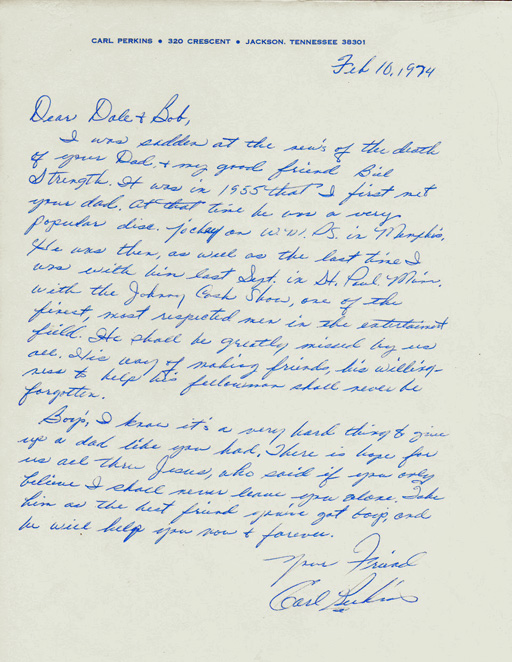
The letter reads:
Feb 10, 1974
Dear Dale & Bob,
I was saddened at the news of the death of your Dad & my good friend Bill Strength. It was in 1955 that I first met you dad. At that time he was a very popular disc jockey on WMPS in Memphis.
He was then, as well as the last time I was with him last Sept. in St. Paul, Minn. with the Johnny Cash Show, one of the finest, most respected men in the entertainment field. He shall be greatly missed by us all. His way of making friends, his willingness to help his fellow man shall never be forgotten.
Boys, I know it’s a very hard thing to give up a dad like you had. There is hope for us all thru Jesus, who said if you only believe I shall never leave you alone. Take him as the best friend you’ve got boys, and he will help you now & forever.
Your Friend
Carl Perkins
On January 26, 1974, Boudleaux and Felice Bryant placed a multi-page ad in Billboard with the text, “We hate to think of what the past twenty- five years would have been for us without you, the artists who have recorded our songs. Thanks forever.” Several hundred artists, including TBS, were listed alphabetically, followed by a list of songs the pair had written.
On May 5, 1974, the Dayton Daily News reported that a Texas Bill Strength Memorial Scholarship had been established at the University of Minnesota by the Country Entertainers Association of the Upper Midwest.
1975
Friends of the Grand Ole Opry published a list of the artists who had appeared on the show over the years, either as members or guests. TBS was listed as William T. Strength. (Billboard, September 6, 1975)
1978
On October 19, 1978, TBS was nominated posthumously to the Disk Jockey Hall of Fame, awarded by the Federation of International Country Air Personalities at their third [fourth] annual banquet, held in conjunction with Country Music Week in Nashville.
1979
TBS was nominated in the posthumous category to the Fifth Annual Country Music Disc Jockey Hall of Fame. The presentation was made on October 12, 1979, at the Hyatt Regency Hotel in conjunction with the annual Federation of International Country Air Personalities Banquet. (Billboard, October 13, 1979) He would win the award in 1991.
1991
TBS was inducted into the Country Music Disc Jockey Hall of Fame. The induction ceremony was held on June 13, 1991.
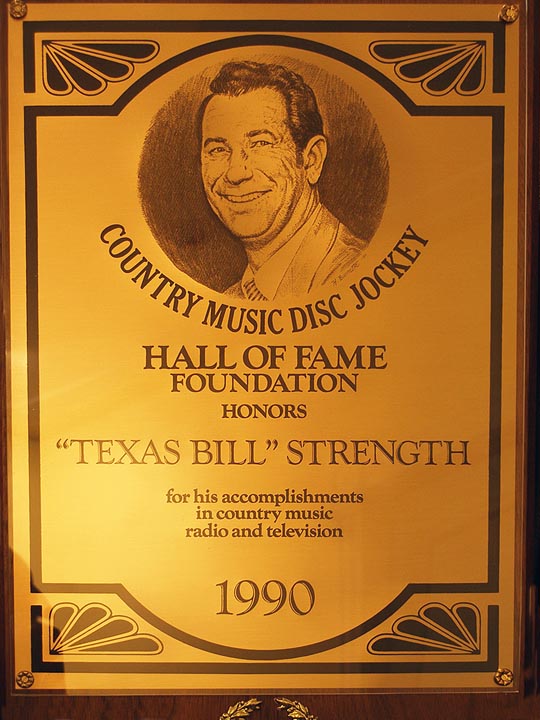
SHOWTIME
In the early 1990s, Dale’s friend Neal Bond had a cousin who was with the Showtime TV Network and helped Dale and Neal pitch the idea of a Texas Bill Strength movie, to be called “The Original Country Outlaw” to the network. Dale hoped that John Ritter could play his dad, Tex Ritter.
The people at Showtime passed, saying the story had “limited appeal.” Although Texas Bill was known all over the country for his recordings, his work as a disc jockey, his personal appearances, his TV and radio performance work, his appearances for the CIO, and his appearances on the Grand Ole Opry and other TV shows, Showtime said they were only interested in promoting stars of the stage and screen.
This blunt rejection was cruel and ironic, because if you’ll remember back to 1957, the St. Paul Pioneer Press’s special section dedicated to TBS was headlined “Movie Stardom is Texas Bill’s Aim.” At that time he was going to California with Tex Ritter to work with him in a couple of films, and said that his biggest ambition was to be a Western movie star. “I’ve had some real good encouragement from producers and directors in Hollywood,” he said. Although he had no formal acting training, he expressed his belief that “I’ve got a natural ability for Western parts.”
Texas Bill never did fulfill that dream, and so far no movie has been made about him. But it’s never too late for someone to shine a light on the fascinating life of this unique, talented, charismatic man – and we know so much more about him than we did in the 1990s.
2004
On May 22, 2004, TBS was given a posthumous Lifetime Achievement Award in the Minnesota Rock/Country Hall of Fame.
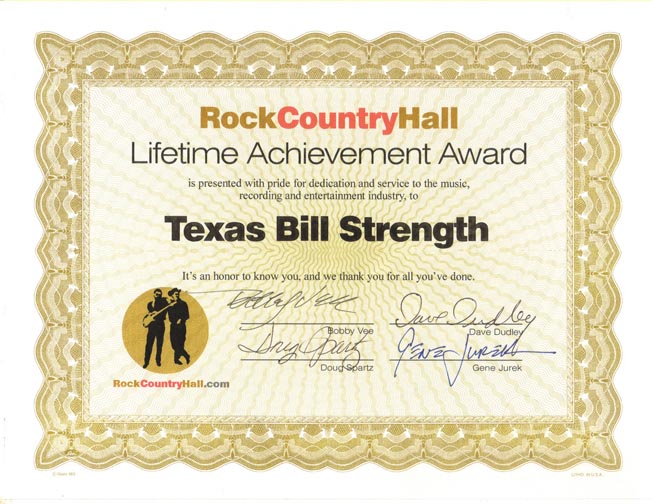
2006
In 2006, TBS was inducted as a performer into the Minnesota Rock/Country Hall of Fame.
2013
In 2013, TBS was inducted into the Legends of South Dakota Country Music and Museum.
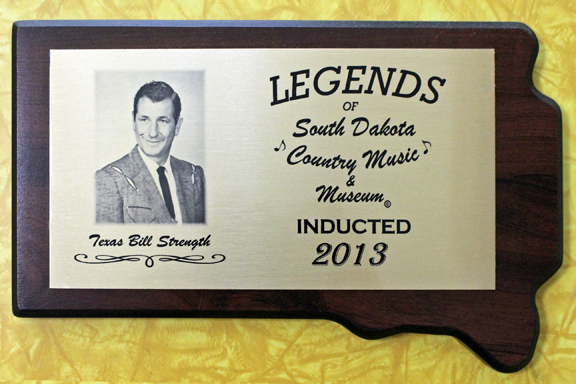
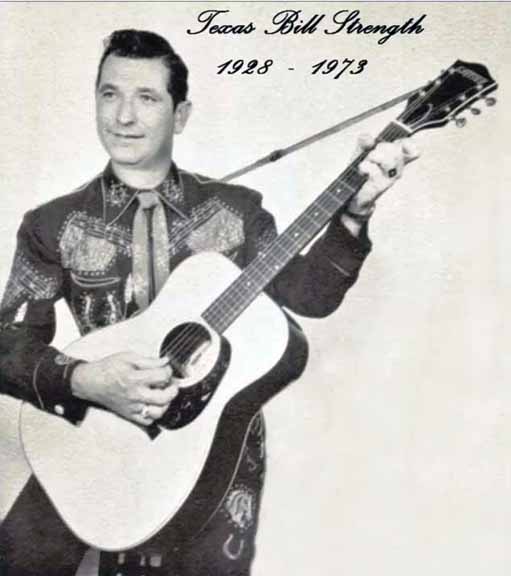
TEXAS BILL STRENGTH’S RECORDINGS
EXTENDED PLAY 45
Bill’s recording of “Six Fools” was included on an EP called “Round Up,” issued by Capitol Records in February of 1962, according to discogs.com. The song was recorded on February 25, 1957.
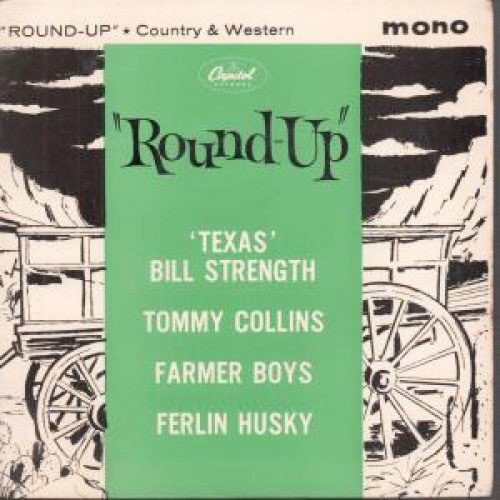
ALBUMS AND CDs
TBS issued one album during his lifetime, Texas Bill Strength’s Greatest Hits. It was released in 1967 on Re-Car Records, a Minneapolis label owned by Russell Holland. Holland wrote the liner notes, which mistakenly said that TBS was born and raised in Houston.
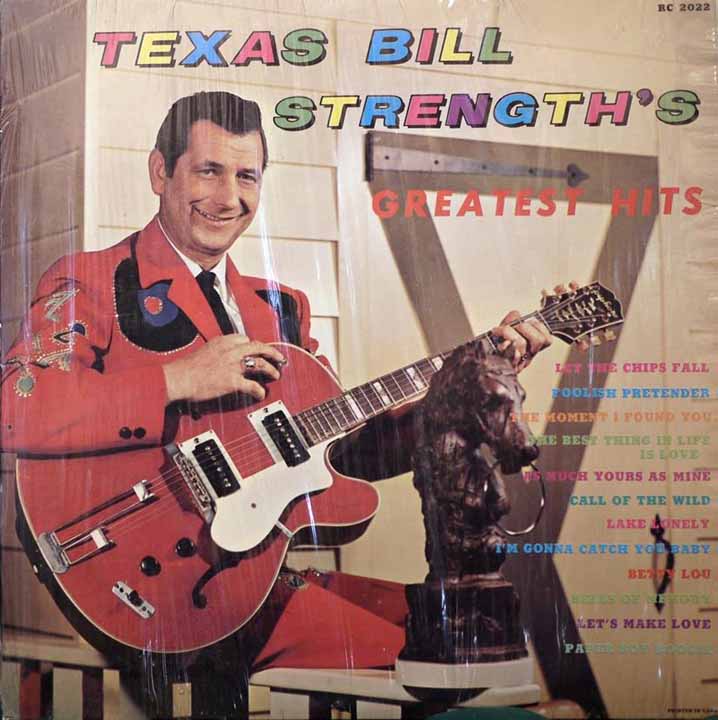
Songs on the album and the years they were recorded are:
- Let the Chips Fall – 1962
- Foolish Pretender – 1962
- The Moment I Found You – 1966
- The Best Thing in Life is Love – 1966
- As Much Yours as Mine – 1965
- Call of the Wild – 1960
- Lake Lonely – 1965
- I’m Gonna Catch You – 1966
- Betty Lou – 1966
- Let’s Make Love – 1963
- Bells of Memory – 1964
- Paper Boy Boogie – 1964
In 1982, a German company called Castle issued a set of albums called “Country & Western in the 1940’s and 1950’s.” There were six volumes, all sharing the same jackets, with only the Volume number circled. That’s efficiency! TBS’s was Volume 4. A note on Discogs says that it was a limited edition of 300 copies.

The track list for this album is:
- When Love Comes Knockin’
- Gotta Lotta Love
- Where Did My Heart Go
- Six Fools
- I Wanna Ride, Ride, Ride on Your Merry-go-round
- The Yellow Rose of Texas
- Cry, Cry, Cry
- Country Love
- Alone
- Is Someone Else the Lucky One Tonight
- Cherry Pie
- It Could Be a Wonderful World
- I’m Doing a Peach Of A Job
- Let’s Make Love or Go Home – Bill Strength and Tabby West
- You Can’t Have My Love – Bill Strength and Tabby West
In 2007 the British Archive of Country Music issued their CD 186, Texas Bill Strength, “When Love Comes Knockin’.” Songs on this CD are:
- Gotta Lotta Love
- Where Did My Heart Go
- Turn Around
- When Love Comes Knockin’
- North Wind
- But Do You Think I’m Happy
- It Ain’t Much But It’s Home
- When The Bright Lights Grow Dim
- It’s A Shame
- I Found My Love And Lost My Heart
- Yellow Rose Of Texas
- Country Love
- Alone
- It Could Be A Wonderful World
- Is Someone Else The Lucky One Tonight
- Cherry Pie
- Let’s Make Love Or Go Home
- You Can’t Have My Love
- Six Fools
- I Wanna Ride On Your Merry Go Round
- Black Coffee Blues
- Paper Boy Boogie
- Little I And Big You
- Who’s The Lucky One
- Frown On The Face Of The Moon
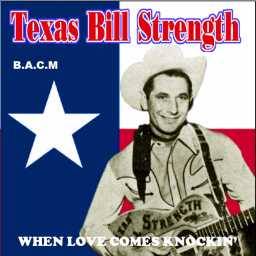
In 2013, the British Archive of Country Music issued their CD D415, Texas Bill Strength Volume 2, “Please Don’t Ever Forget Me.” Songs on this CD are: (*previously unissued)
- Prisoner’s Song (w. Johnny Bond) [radio]
- Turn Around (w. Carl Perkins) [radio]
- Never (w. Betty Foley [Atlanta, GA, 1954]
- What More Can I Do (w. Jerry Reed] [Minneapolis, radio, 1954]
- Someday You’ll Call My Name (w. Melody Ranch Boys) [Atlanta, GA, 1954]
- Y’All Come (w. Melody Ranch Boys) [Atlanta, GA, 1954]
- When I Lost My Baby*
- Try To Think How Lonesome I Would Be*
- There’s No Way Out*
- That Lucky Old Sun [radio] In 2023, Bill’s son Dale produced a video that melded Bill’s voice with live action of his sons singing along, Dale playing the mandolin, and Bobby playing the drums. The video was premiered on March 27, 2023, and can be seen on YouTube.
- Substitute Love
- Post No Bills
- Please Don’t Ever Forget Me
- King Size Broken Heart*
- Mr. Moon Sailing High
- Molly Darlin‘ [radio, July-54]
- Little Red Wagon
- I’m Walking In Heaven
- If I Could Buy Your Love
- Actions Speak Louder Than Words
- I Was Only Teasin‘ You
- It’s Nice To be Living
- Million Memories
- Tears In My Beer
- Nobody Knows This More Than Me
- Guess I’d Better Go
- Heart Don’t Complain
- Picture Of My Heart
- Rain Or Shine
- Senorita

Prague Frank also lists an album on HMC Records called “Paper Boy Boogie.” He gives HMC a question mark, though, with no other information about the company or the record. He does list the tracks:
- Actions Speak Louder Than Words
- Mr. Moon Sailing High
- Black Coffee Blues
- Paper Boy Boogie
- Cherry Pie
- Rain Or Shine
- It’s Nice To Be Living
- Country Love
- Let’s Make Love Or Go Home
- Turn Around
- Cry Cry Cry
- When Love Comes Knockin’
- Gotta Lotta Love
- North Wind
- Six Fools
- Watching The World Go By
- Tears In My Beer
- Hillbilly Hades
- Nervous As A Cat
- Little Red Wagon
Texas Bill’s songs also appear on any number of compilations; “Hillbilly Hades” and “Paper Boy Boogie” seem to be his most popular for these records. The former even appears on a Dr. Demento package! See the bottom of this page for some examples.
